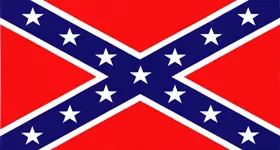Civil War Battles |
Colonial Wars |
American Wars |
Link To This Page — Contact Us —
The Battle of Kernstown (Second)
July 24, 1864 in Kernstown, Virginia
Early's Maryland Campaign
Union Forces Commanded by:
Brig. Gen. George Crook
Confederate Forces Commanded by: Lt. Gen. Jubal A. Early
**Missing and Captured Conclusion: Confederate Victory |
 |
BATTLE SUMMARY
Following his daring march to the gates of Washington after the Battle of Monocarcy at Frederick, Maryland, Lt. Gen. Jubal A. Early, content to have thrown a scare into the residents of the Union's capital, began a measured and disciplined retreat back to the Valley. By the evening of July 20, Early had reached Strasburg — and there he would make a critical decision. Given the option by Gen. Robert E. Lee of either returning his 17,000-man II Corps to the main army, by then dug in at Petersburg, or remaining in the Valley to divert Union troops from their advance on Richmond, Early — prodded by his second-in-command, Gen. John C. Breckinridge — chose the latter course.Believing that Early's army was no longer a threat in the Valley, Maj. Gen. Horatio Wright abandoned his pursuit and ordered the VI and XIX Corps to return to Washington, where they were to be sent to Grant's "army group" before Petersburg. Wright left Brig. Gen. George Crook with 3 divisions and some cavalry to hold Winchester. Crook, however, assumed Early intended to leave the Valley despite ample evidence to the contrary.
Skirmishes with Confederate cavalry at Middletown and Newtown on July 20 and 21 clearly indicated the remaining presence of Early's army. But even though his cavalry encountered pockets of Confederate infantry during these engagements, Crook still believed that Early was headed southeast, toward Petersburg and Lee. Reliable sources, he said, had told him so.
Thus, when informed that a substantial Confederate force was approaching his 11,000-man force near Kernstown, Crook thought it was little more than a reconnaissance in force. Therein lay his fatal miscalculation. There, carefully shielded by woods and ridges, was Early's entire army. Ever wily, the Confederate commander halted his advance and left the first move to Crook. Still doubting the strength of the forces arrayed against him, Crook took the bait, ordering the troops of Cols. James Mulligan and Rutherford B. Hayes, less than 3,000 strong, to advance south along the Valley Pike from Kernstown south of Winchester.
Meanwhile, Early's entire plan changed when Breckinridge discovered a ravine east of the Pike that allowed his troops to march along Crook's exposed left flank undetected. With Gen. Stephen Dodson Ramseur's division swinging west to fall on the Union right, the stage was set for a classic double envelopment. Though cognizant of the Confederate deployments, Mulligan and Hayes, under orders from Crook, pushed southward, brushing aside Rebel skirmishers as they went. Picking up the pace of their attack, Mulligan's men ran headlong into a full Confederate division, led by Gen. John B. Gordon.
Breckinridge picked this moment to attack. Leading the charge himself, Breckinridge and his men quickly rolled up Hayes' 1,300 Ohioans and West Virginians, scattering them back to defensive positions atop Pritchard's Hill. Sent reeling as well, back toward Kernstown, were two of Mulligan's four regiments. Mulligan's other 2 regiments bravely held their ground against Gordon near Barton's Woods, but they were forced back as the left of the Union line collapsed. They retreated to a stone wall along a lane that led to the Pritchard House, at the foot of Pritchard's Hill. It was there, led personally by Mulligan prepared to make a last stand.
By this time, Ramseur had snaked his way along Sandy Ridge and emerged on the Union right. From this position, Ramseur's sharpshooters poured fire down the lane held by Mulligan's troops. Gordon also attacked from the center. The Confederates attacked from 3 sides. The envelopment was complete. After Mulligan was shot from the saddle, the entire Union line caved in, and his valiant “Irish Brigade” joined the chaotic retreat toward Winchester.
Crook and his officers managed to bring a semblance of order to the withdrawal and kept the resounding retreat from becoming a full-fledged rout. Nonetheless, the Federals did not stop at Winchester to regroup, but streamed across the West Virginia line, to Bunker Hill. Crook retreated to the Potomac River and crossed near Williamsport on July 26. Crook's crushing defeat would prompt the Union high command to make changes that would ultimately seal the fate of the Valley.
